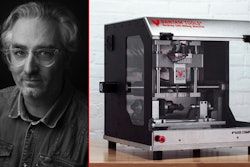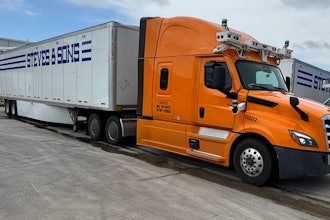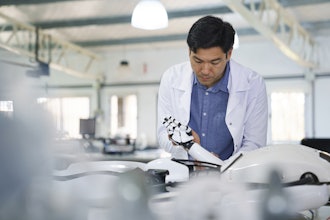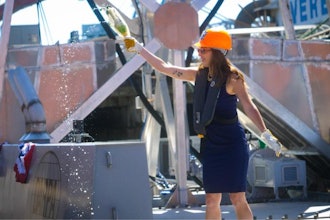
A Reshoring Initiative report estimates that companies bringing operations back to the U.S. helped to create up to 350,000 new jobs in 2022.
Dr. Matthew Putman, the CEO of Nanotronics, supports reshoring but encourages companies to consider transforming manufacturing.
"If you see a lot of the initiatives right now to bring manufacturing to the U.S., they are $100 billion or $80 billion," Putman said. "These huge proposals are thought to be what's required for NextGen manufacturing. I think that manufacturing could be much less expensive. You can do a lot more distributed, smaller manufacturing because of major advances that have been made in software such as artificial intelligence."
AI has become more creative. Putman cited advancements such as ChatGPT, a chatbot that generates text, and DeepMind, an AI engine that defeated a professional human in Go, an abstract strategy board game.
"What if a manufacturing facility could ask a question of artificial intelligence to win the game of producing the best product?" Putman asked.
Putman stresses that this would not involve brand new technology or engineering.
"This is the real exciting promise because it's completely software," Putman said. "Humans are now the creative force that is trying to optimize for new products that they would like to see in the world, new advances and new technologies rather than those that are doing the laborious tasks. It's just a new way of looking at manufacturing in general."
While portions of AI practices are being used, Putman believes the full realization is still a few years away. But Putman's company, Nanotronics, is already using the capabilities.
Nanotronics is an advanced machines and intelligence company that helps customers solve unique inspection and process control challenges for precision manufacturing.
"We built a factory in nine months that was able to produce everything from medical devices to factory instrumentation by using prefab techniques and our own AI algorithms," Putman said. "We're starting to build these in places in the United States and around the world."
Terms like automation and AI can catch the attention of factory workers concerned about machines replacing their jobs. However, Putman said the technological advancements he promotes would add jobs.
"Factory work now is high tech work," Putman said. "[In] a machine shop, especially a machine shop that uses artificial intelligence, you're spending time at monitors and stations as much as you are actually cutting things physically because you're collaborating with a robot and with an AI.
"There are new skills to be learned, but those skills don't require Ph.D. education. They're skills that can be learned on the job. They're skills that require a new type of training education that companies can provide. Or we can look at a new way of doing trade education."
Putman said Nanotronics proves the effectiveness of AI internally and uses it as an example for its 250 global customers in industries such as biomedical, semiconductor and aerospace.
For example, Nanotronics uses artificial intelligence for manual assembly and has an AI agent guide humans to assemble more precisely.
Additionally, Nanotronics' customers will use AI in their control systems and be able to identify problems. As a result, the company can correct the problems based on predictions instead of issues that have already happened.
"[It's] making the ultimate AI forecasting of what's going to occur rather than what has already occurred," Putman said. "Internally, we use this technology for everything from assembly to machining."
Putman has wanted to implement AI in manufacturing operations for about 11 years. He has watched the introduction of advancements such as unsupervised learning and large language models.
AI continues to evolve, and in the future, Putman anticipates more gesture control and the ability to exchange tasks between humans and machines and would like to see more dexterity in robotics.
"I think it all leads to more atomic precision," Putman said. "Just like you're seeing better ways of creating language models for generating conversation with ChatGPT, you're going to see ways that AI interacts with humans in a more powerful way. What that powerful way leads to is where you're making things that are perfectly precise. That is a kind of an industrial replicator."























